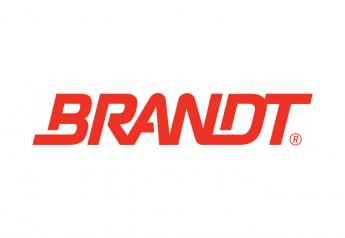ARA Introduces New Tools to Build Community Goodwill
Strong community relations start with operating your business the right way: running a safe and secure facility, complying with relevant regulations and operating ethically.
Building and improving your operation’s perception in the community requires another level of effort. But making deposits into your repository of community goodwill can buffer your company’s reputation should an incident occur at your retail location or elsewhere.
During ARA’s Crisis Communications Training, attendees often asked how they can create and build community goodwill—a strong reputation that can withstand a crisis—for their local facilities.
ARA recently created a “how-to kit” designed to provide ag retailers, distributors and suppliers with a blueprint to create awareness, improve public opinion and cultivate a positive image of their facilities.
Included in the online toolkit are videos, documents, sample news releases, invitation templates and checklists to help inform your community goodwill efforts.
Getting the attention of local media can be one of the most useful tools to build community goodwill. Local newspapers, radio and television address facilities’ target audiences among the general public. Yet, creating relationships with local media can be challenging because of turnover, interest level and lack of understanding about what ag retailers do and how they impact the local community.
The following tips may help you better engage and build a productive relationship with local media outlets.
1. Engage and Educate: First, you will need to establish a relationship with your local media. Invite them to tour your facility or have lunch with you. Take doughnuts and coffee to the newsroom or the station. Set aside your agenda, and teach the reporter about what you do and why it’s important.
2. Be a Resource: Offer your business (and perhaps your farmer-customers on a permission-basis) as a resource. Area farmers are experts on economic trends, commodity pricing, weather and climate, conservation, finance and more. They can be a great source to help reporters localize national stories and trends. Providing good sources in a timely manner (within 24 hours) will keep you and your company top of mind.
3. Firsts, Lasts and Milestones: News is newsworthy when it’s fresh. A forklift loading a truck isn’t news. But a 35-year employee loading his last truck, spraying his last field or finishing his last harvest is newsworthy. Anniversaries offer opportunities to reflect on how business has changed over the years. Innovations in services or new technologies showcase that the business of farming continues to change. Opening an expanded warehouse is a sign of economic growth and makes for a photo opportunity.
4. Think Visually: What are you doing in your business that looks good in video or a photo? Photos are the first thing people look at in a newspaper or online. Colorful photos with interesting subjects (people, animals and backdrops) make for strong storytelling. Also, when media is at your facility, what impression does it reflect: well-maintained, organized, clean and fresh or dirty, old, stained and sloppy? Put your best foot forward.
5. Don’t Be Greedy: Reporters usually like to cite more than one source. What may be a huge new product or service for your business may not receive coverage commensurate with the effort you invested. You may only get a mention. However, your new product or service may help solidify a larger story for the reporter.
6. Show Gratitude: Being a reporter is generally a thankless job. Take a minute to express your appreciation, when warranted, in an email (good) or with a handwritten note (better).
7. Be Persistent: Media is a stubborn lot. Reporters may ignore you; then, during a slow news day, they may suddenly knock on your door. Keep sending news releases and invitations and pressing your story ideas.
Do you need help coming up with ideas to engage local media? Do you have a community relations success story to share with other members? ARA invites and encourages members to participate in the community goodwill discussion online. Check out the website at www.aradc.org/goodwill.







